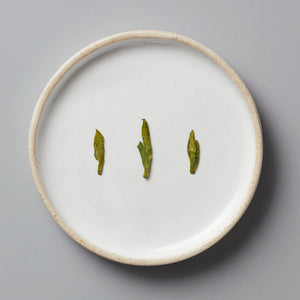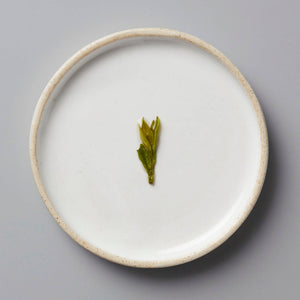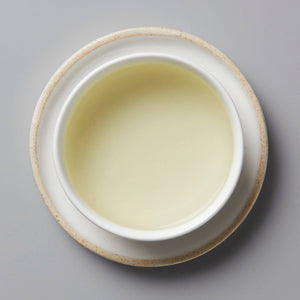Your Cart is Empty



SESSION LONGJING | green
$4.00 - $72.00
SESSION LONGJING is a longjing (dragonwell) from Xinchang county, Zhejiang province, China. Longjing from Xinchang is referred to as Da Fo ("Big Buddha") longjing, to differentiate it from West Lake longjing, the traditional cradle of this Chinese green tea. In our experience, “traditional” doesn’t always mean “better”—the West Lake gardens lie close to Hangzhou’s industrial centers, while Xinchang’s higher elevation and cleaner rural environment support healthier leaf and more reliable cup quality.
What makes this lot distinctive is its cultivar makeup: about 90% Longjing #43 with a smaller proportion of Wu Niu Zao. Longjing #43 is prized for its clarity of flavor, frost-resistance, and consistent yield, producing a tea that is bright, sweet, and clean with very little bitterness. Wu Niu Zao, an earlier-budding cultivar, is softer and rounder, lending body and a gentle cereal-nut note. Together, they create a longjing that is technically precise yet flavorful—nut milk sweetness, chestnut aromatics, and a lingering mineral finish.
Produced by masters Rende Jin and Jiangong Zhong (a combined 75 years of longjing making), this tea was crafted by hand with the aid of controlled machine processing to ensure uniformity. The result is not a rare microlot chasing idiosyncrasy, but a benchmark longjing: clean, balanced, sessionable, and consistent from cup to cup.
We source our green teas fresh each year at harvest. Like all green teas, this lot will begin to "stale" after 1 year. This process is greatly stunted by proper storage (our bulk bags are ziptop) and refrigeration.
vintage —spring '24
style — longjing ("dragonwell")
cultivar(s) — wu niu zao / qunti
region — Xinchang, Zhejiang, China
elevation —350 meters
producer — Rende Jin / Jaingong Zhong
nomenclature —long (龙)—"dragon" | jing (井)—"well"
STEEPING PARAMETERS
(use freshly boiled spring water)



